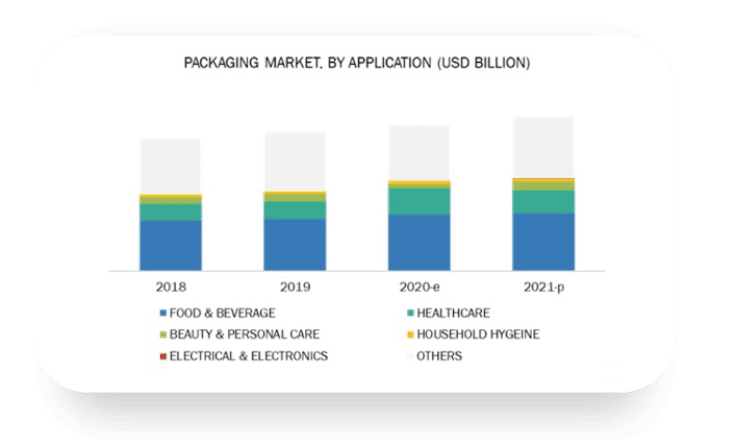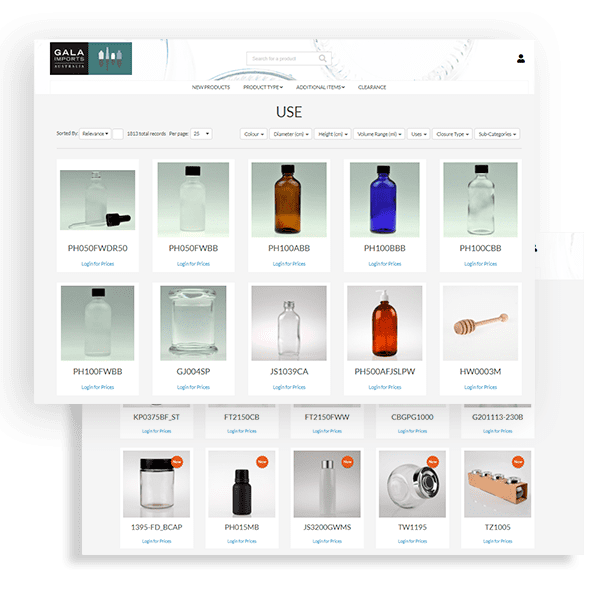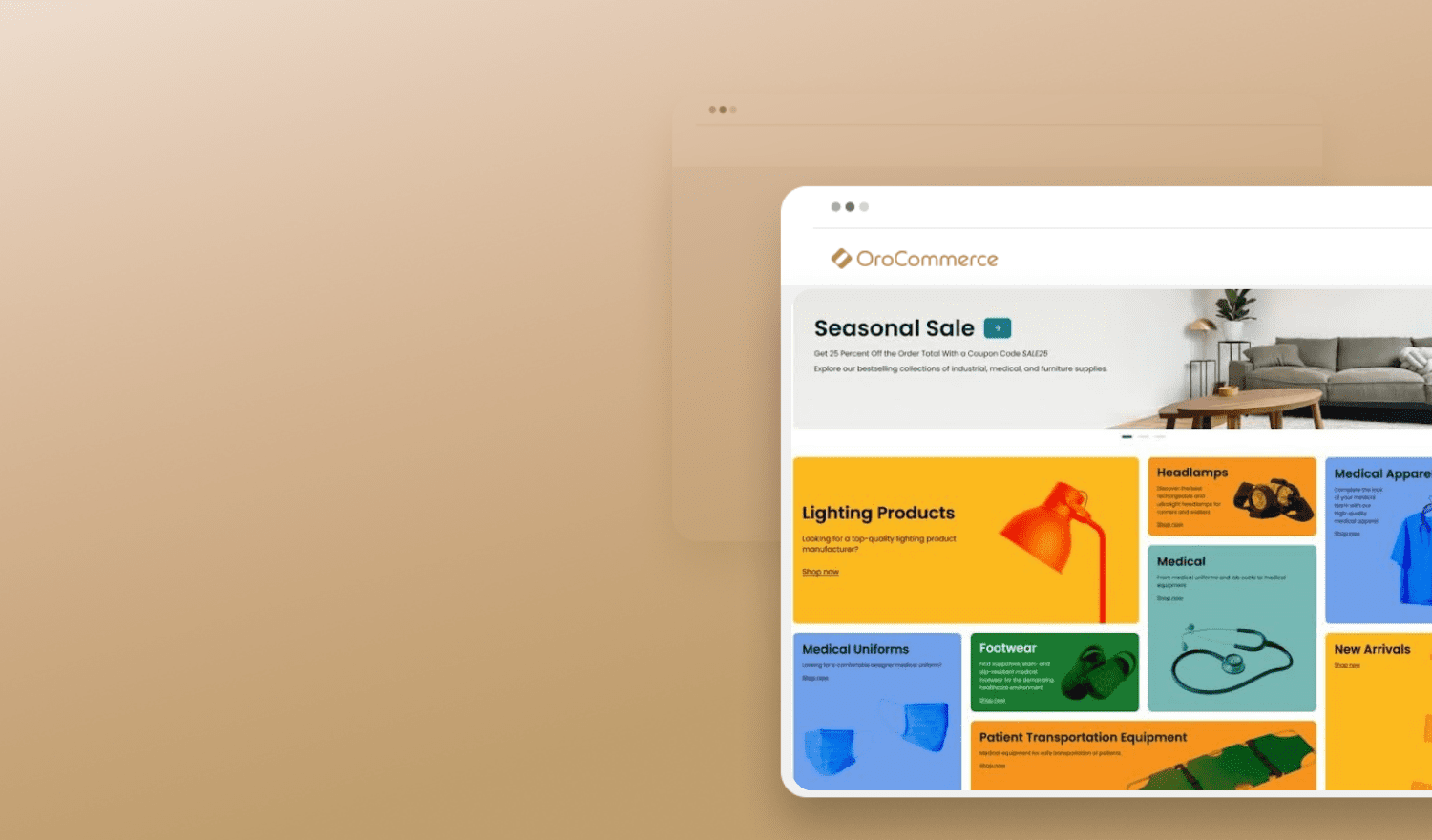navigation

The B2B industrial packaging industry has experienced significant growth in recent years, driven by increased demand from various sectors such as manufacturing, healthcare, and retail.
However, with growing competition and changing customer expectations, B2B packaging companies are under pressure to improve their sales efficiency and remain competitive. One solution that has emerged is the adoption of eCommerce platforms, which can help businesses streamline their sales processes, reduce costs, and reach new customers.
In this article, we will explore the role of eCommerce in the B2B packaging industry and how it can drive greater sales efficiency for companies in this sector.
B2B Packaging Market Overview
The packaging industry is riding a wave of steady growth. According to Smithers long-term strategic forecasts, the global packaging industry was growing steadily at a 2% per annum before the COVID-19 pandemic. After experiencing a single-year drop of 6%, Smithers predicts recovery and return to growth that tops $1.13 trillion by 2030.
What’s driving this growth? Changing consumer demands is one reason.
According to industry research analyst, Aga Jarzabek, with Chicago-based Euromonitor International, value-sales growth in the carbonated beverage industry will come from, “smaller pack sizes and focus on single-serve through convenience and at register display.” As sales of fountain soda decrease, the demand for bottled water, sports drinks, and energy drinks increases. And manufacturers are using packaging as a key product differentiator.
Food manufacturers are also engaging consumers with revamped packaging, applying pressure to packaging manufacturers to invest in innovative packaging. For example, in 2018, American Packaging invested in a flexible packaging system that provides more choice in surfaces, substrates, and technical performance.
In addition, the increasing demand for consumers and businesses to buy online means more products are being shipped than ever before. This increased demand for shipping increases the demand for packaging.

Rising life expectancies not only pressure healthcare providers with greater demand, but that demand also translates to pressures on pharmaceutical companies and healthcare related product producers to manufacture and package more products.
Finally, as standards of living increase globally, there is a higher demand for non-essential products and their packaging. From cosmetics to prepared cocktails, more products demand more B2B packaging solutions.
Features of Packaging in the B2B Sector
The discussion concerning the essential features of a particular packaging solution begins with defining its primary objective.
1. Safety
Safety will matter the most if the company uses packaging for shipping products. Subscription box companies are an excellent example because their product might travel thousands of kilometers before reaching its destination. Most of them use cardboard boxes, which – given the thick fluting size – are a very durable and cheap solution. Safety is also provided by packaging fillers or other, more durable materials (like steel or wood). Additional protection can also be achieved by doubling the outer layers (bubble wrap or different types of foil). In the end, the idea is to emphasize the importance of safety.
2. Serving in the Onboarding Process or Influencer Campaigns
B2B packaging can also mean solutions like onboarding boxes or boxes for influencer campaigns. In that case, the primary goal should be the aesthetic or original look. Using unique printing techniques (like hot stamping and embossing) or designing an extraordinary shape are ways to evoke positive emotions. When discussing the elegance or uniqueness of a box, we shouldn’t forget about the product or item inside. An onboarding box will be much better if the elements inside are arranged logically, with the use of partitions.
3. Branding
In the B2B sector, it’s crucial to remember about branding too. A packaging design – even if you send gift boxes to your clients – should include your logo. As a business owner, your primary goal is naturally to maximize profit, but do not neglect the importance of the company-client relationship. A skilled entrepreneurs will seize every opportunity to build their brand awareness.
4. A Storyteller
Finally, B2B eCommerce is no exception when it comes to telling a story. (which kind of mixes the two previous “bullet points”). The marketing principle of establishing an emotional connection is still valid, almost every brand has a story to tell. The right choice of colors, graphics, and witty wording guarantee that the packaging solution will be memorable.
#5 Sustainability Emphasis
Even though sustainability could be called a relatively new concept in modern business, it has already stormed the packaging industry. It’s not a hoax that a growing number of entrepreneurs have switched to eco-friendly packaging. The reasons for that transition are simple. Choosing environment-friendly packaging can be a deal-breaker because progressive-thinking customers will find an eco solution much more appealing. Sustainable solutions are not necessarily costly too. All it takes is to find these ones, which significantly reduce the negative footprint.
Learn more about digital transformation trends in packaging industry
Challenges Facing the Packaging Industry
Meeting the rising demand is just one of the challenges facing the packaging industry. In addition, there are increasing cost pressures due to the rising cost of raw goods and rising transportation costs. And cost is just one of the challenges.
Rising costs
Manufacturers of glass for packaging have seen the price of raw materials soar, pushing prices up 40% in some locations. Most buyers balk at such rapid price increases, and the entire increase can’t be passed along to the customer. This challenges the packaging industry to reduce costs in other areas.
Getting products seen
Most packaging manufacturers and wholesalers struggle to make their products discoverable. Each basic package may be available in a wide variety of configurations. The result is a product catalog that contains thousands and thousands of SKUs, confounding researchers looking for just the right packaging. With digital catalogs replacing hard copies, finding the right product may be a bit easier but still takes considerable research.
Diverse customers with diverse needs
The packaging industry serves every other industry. Any physical product made must be packaged in some way. Even packaging companies that specialize in just a few materials find that they serve a very diverse customer base. They face the challenge of treating each customer individually, based on that customer’s needs.
Increasing complexity
Packaging purchases are intricate transactions. The product researcher gathering information often reports to a product development team who reports to a brand team. Knowing who can approve what is confusing and makes it difficult for sales teams to keep the process flowing smoothly with each customer. Add to this the complexity of pricing each quote correctly and it’s easy to see that human errors are inevitable.
How B2B eCommerce Addresses Packing Industry Challenges
True, the packaging industry faces many challenges. But it’s also true that B2B eCommerce provides many of the tools necessary to meet these challenges head-on.
Workflow automation
For companies prioritizing productivity and cost reduction, automating workflows is the answer. Most manufacturers are quick to adopt technology on the factory floor, but slower to make full use of technology in the back office. Companies in the packaging industry are no different.
But by deploying B2B eCommerce platforms with customizable workflows you can reduce errors and outsource order data entry to the customer. Plus, when integrating the eCommerce system with the ERP, order management and fulfillment systems, orders flow effortlessly and their data is available to whoever needs it.
Discover how workflow automation can benefit your business
Using the B2B eCommerce platform to create self-serve portals also reduces the need for customer service and sales staff to spend time on the phone or with email answering status inquiries. At a minimum, these portals provide customers visibility into their order history and delivery details for current orders. Fully developed, they allow customers to handle returns and re-order from order history. Workflow automation and automated eCommerce free staff to spend less time on routine tasks, and allows them to focus on providing value-added services.
Improving product visibility
A common pain point for product researchers is finding the right packaging in just the right configuration to meet their needs. With eCommerce, packaging companies can make the search process easier.
For existing customers, eCommerce as a B2B packaging solution allows you to create personalized catalogs that meet the customer’s packaging needs. Once the sales team identifies the packaging requirements, only products meeting the customer specifications populate the customer catalog.

For product researchers, guided and intelligent search makes combing through thousands of SKUs easier. Search can be configured to search by product description, SKU, or even by solution. By reducing the pain of product identification, you remove friction and increase closing rates.
Improved customer experience
Today’s packaging B2B buyers are looking for the same frictionless experience at work as they enjoy at home. As more and more millennials move into decision-making positions, it is important to understand this generation has never lived without the Internet. They use the Internet to discover products, look for company and product reviews, and make purchases.
B2B eCommerce allows you to offer an improved customer experience. From self-serve customer portals to automated configure and quote workflows, eCommerce platforms remove friction. Integration with chatbots provides a customer experience that meshes with the preferences of Millennial buyers. They get instant gratification and enjoy the convenience of getting answers when and where they want.
Unlimited personalization
B2B eCommerce allows you to serve the needs of a diverse set of customers, each with its own packaging needs.
Not only can you personalize products and prices, but you can also operate multiple websites geared to the needs of specific verticals. For example, B2B eCommerce makes it easy to create one experience for healthcare product packaging, another for food packaging, and another for beverages, perfumes, and pharmaceuticals. A flexible B2B eCommerce platform should allow you to operate unlimited, customized front-end experiences with a single backend.
Embrace complexity
B2B eCommerce platforms allow your B2B packaging company to embrace the complexity of the sales processes, not shy away from them. By allowing customers to create their own user roles and permissions, you allow them to conform your systems to their internal hierarchy. Following up with the right person at the right time is easier with visibility into your client’s purchase approval process. And with digital technology, your eCommerce system conforms on a customer-by-customer basis.
You can accept and process orders with EDI for eCommerce or use punch-out catalogs. You can support B2B and D2C business models with one instance.
How Gala Imports Drives B2B Packaging Conversion Rates Up with eCommerce
Gala Imports is a supplier of glass and PET containers to small and medium-sized manufacturers and businesses across Australia, New Zealand, the Pacific area in general. Since 1986, they have supplied packaging for industries such as:
- Fragrance, Homecare, and Cosmetics
- Candle Making
- Gourmet Food
- Floral and Homeware
- Bridal and Gift
- Craft, Engraving and Decal Decoration Specialists
In addition, they serve the wholesale industry as well as individual consumers such as hobbyists or cottage food crafters.
The challenge
Gala had outgrown their Magento platform. When it came time to renew their license, they realized it was time to replatform. They searched for a B2B eCommerce solution that could handle the complexities of their multiple business models. They needed to face the challenges of:
- Offering separate experiences for different B2C and B2B industrial customers
- Product and pricing management needs for multiple verticals
- Finding B2B-focused features and B2C-focused features in one platform
- Simplifying and streamlining their back-office with digitalization
The solution
Gala compared the available B2B eCommerce platforms and was impressed by the extensive B2B capabilities that OroCommerce offered right out of the box. They selected OroCommerce as their platform and worked with Aligent, an Australia-based integrator to implement the solution.
Gala improved their customer experience with OroCommerce. They can now use one solution to support multiple websites each with their own unique look and feel. These websites are all hosted on separate domains and each features different products, pricing, and functionality.
B2B customers and B2C customers now get the experience tailored to their special needs, including different payment options and workflows.
Gala has improved their marketing and communications by leveraging the power of OroCRM, a native CRM product included with every OroCommerce installation.
The results
Gala’s investment in upgraded eCommerce positioned them to succeed during the COVID-19 pandemic. As the demand for medical containers soared, Gala was prepared to handle the flood of orders and inquiries.
Gala saw a 25-30% increase in average order sizes and a 50% increase in their conversion rates. Their frictionless buying experience will help them retain new customers and increase customer lifetime value as well.
Conclusion
Yes, the packaging industry is facing challenges on multiple fronts. But with the application of technology, B2B packaging companies can innovate their business processes as well as innovate their packaging for B2B industrial products.
Workflow automation is one tool to reduce pressures caused by rising costs. Integrated systems reduce data entry and democratize data to improve productivity and decision-making. Powerful on-site search improves customer experiences and frees sales teams to focus on relationships and not routine inquiries. CRM tools help segment customers and markets to deliver the right marketing message at the right time.
Digital tools unwrap a wide range of growth and productivity possibilities for the packaging industry.
Discover how B2B eCommerce supports the packaging industry
Questions and Answers about B2B packing
What is B2B packaging?
B2B packaging refers to the packaging solutions and services that are provided by businesses to other businesses. These packages are typically used for shipping and storing products, and they can range from simple cardboard boxes to more complex packaging systems that incorporate specialized materials and designs.
How can businesses respond to changes in B2B packaging industry more effectively?
To respond effectively to changes in the B2B packaging industry, businesses can take several steps. These include:
1. Stay up-to-date on industry trends and emerging technologies.
2. Develop innovative packaging solutions.This can involve leveraging new materials, designs, and technologies.
3. Embrace eCommerce: As more B2B customers shift to online purchasing, businesses must adopt eCommerce platforms to increase their reach and improve their sales efficiency.
4. Invest in sustainability by developing eco-friendly packaging solutions, reducing waste, and adopting sustainable business practices.
How does B2B eCommerce address the packing industry challenges?
B2B eCommerce can address several challenges faced by the packaging industry, including:
1. Increased competition: With a growing number of packaging companies in the market, B2B eCommerce can help businesses reach new customers and expand their market share.
2. Complex sales processes: B2B eCommerce platforms can automate many of the sales processes, reducing the time and effort required to close deals.
3. Limited reach: eCommerce platforms can help businesses reach a wider audience and expand their customer base.
4. Cost efficiency: eCommerce platforms can help businesses reduce costs associated with traditional sales channels, such as sales staff and marketing expenses.



